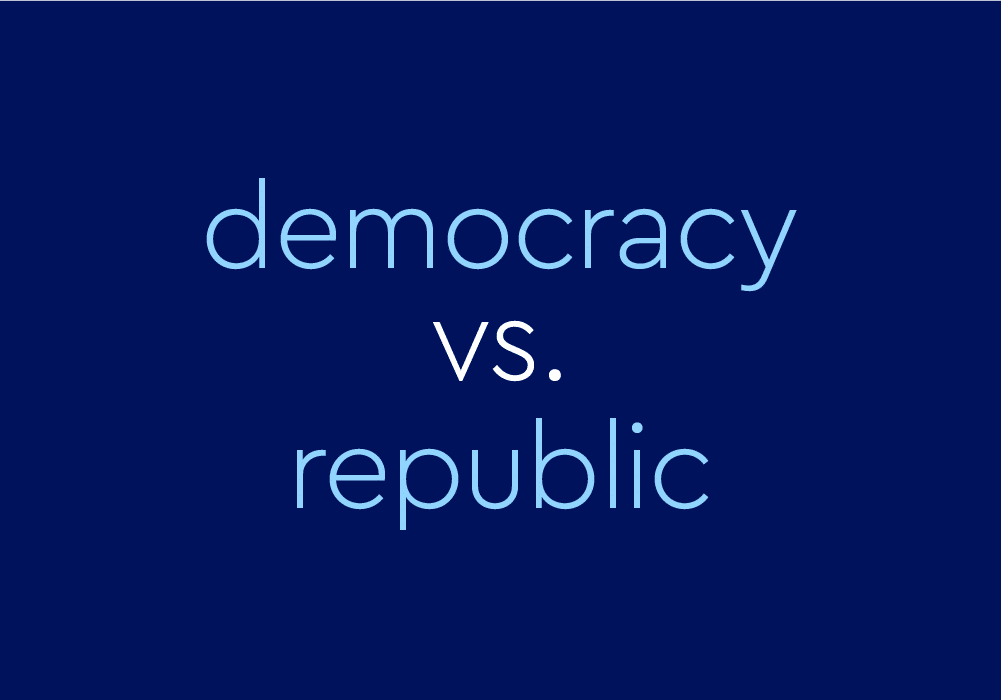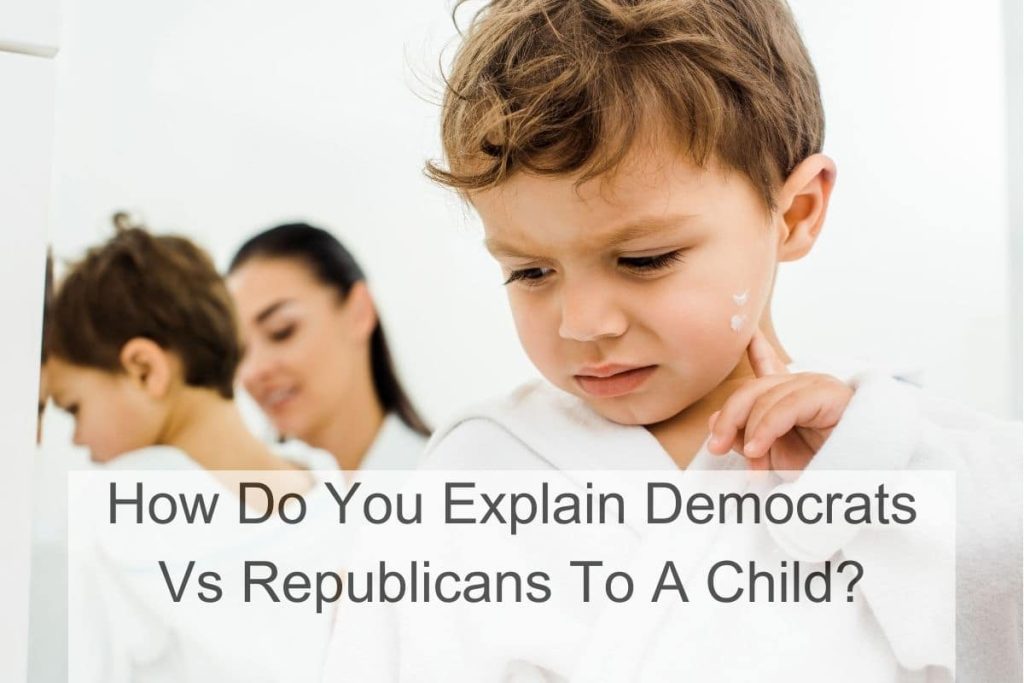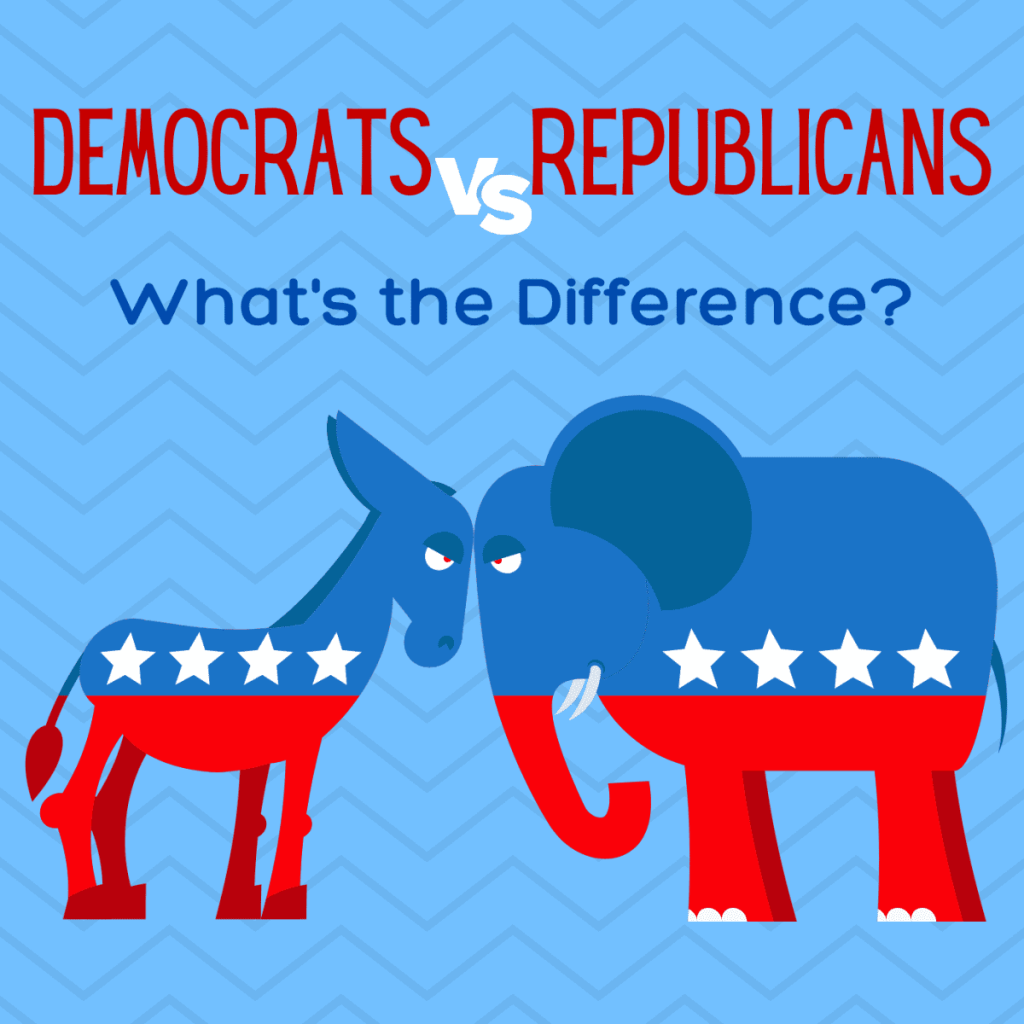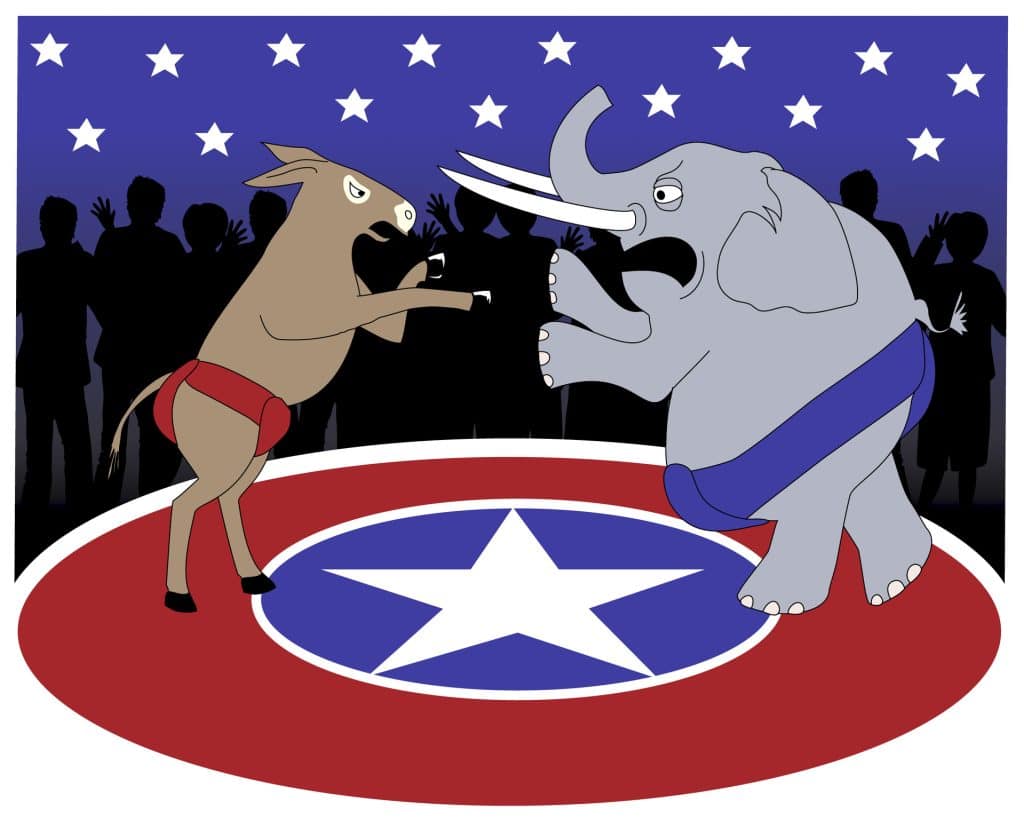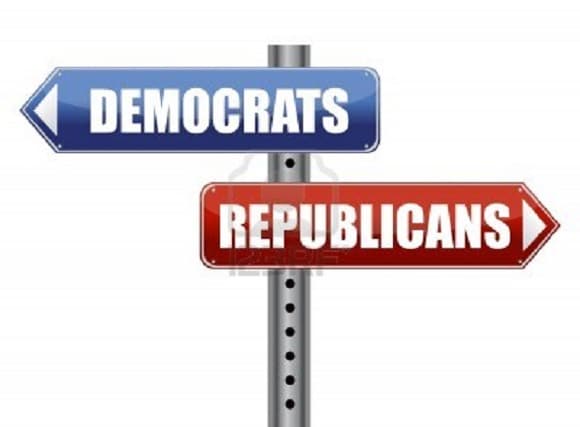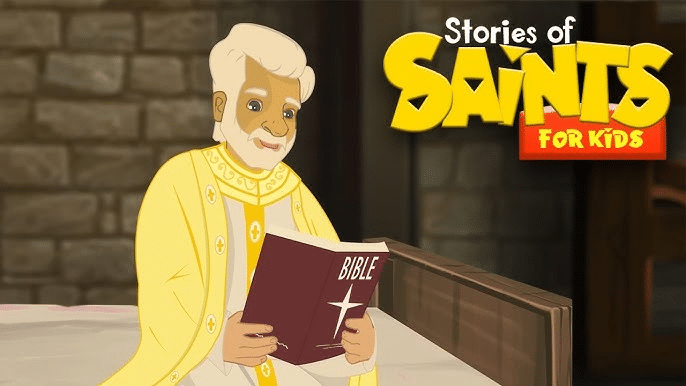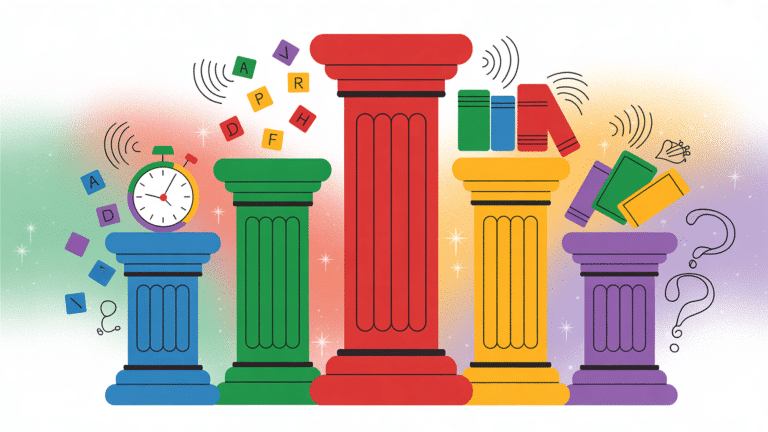Don’t you think teaching your kids about the things that are meant to be introduced to them is itself one of the tricky tasks? But it gets through their minds quickly—but teaching your kids something related to politics? Well, this is something different, we would say. It is a challenging task to introduce the two important political parties of the US to your kids at an early age.
This world is full of politics. Nothing can be hidden from kids and especially things that are visible almost in every corner of the world, and that is politics. Politics is in the news, in the discussions, and where not! Children can hear political discussions from anywhere, so it is best to start that conversation from home.
After all, everything begins at home, and it should get cleared at home itself.
Why is It Necessary for Kids to Learn?
Teaching your kids about politics doesn’t just start by knowing to give their vote at the right time at the right age. But it starts with giving them the political knowledge enough to figure out which one deserves their valuable vote by the time they become eligible for it. Young children must understand the value of legislation as it has an impact on the things we do in our day-to-day life. Kids need to get introduced to the terms like consistency, partaking, and rationality even in the beginning year of early education. Regardless of whether they don’t seem so much into political studies, these all are the crucial basics that they must know.
The little ones generally have a lot of queries related to matters of politics, especially when the election seasons are at its peak. When they look around, and see different banners hanging on the windows of the people’s houses. If you will ignore the questions of your kids, then they will just get piled up in their minds and will end up having a mind with tons of unsolved questions. Hence, this makes it mandatory for you to solve their queries and give them correct information about politics and their questions related to it.
It is going to help your children a lot more than you could think if you clear their queries and explain to them about the local and central governments and their workings. Instead of acting in front of them like this all nothing to do with them or their lives, they should not care about it because this attitude will only make them face trouble in casting not just their vote to the right party in the future but also the absence of one of the fundamental topics of their life and its working.
How to Explain Democrats vs. Republicans to Your Child
1. Keep Your Personal Opinions Aside for That Time
While telling about all your young ones, make sure that you tell all this to them by keeping all your feelings aside. It is very important for them to hear out about both sides from a neutral person who seems non-supportive or equally supportive of both political parties and their ideologies. You can criticize anything with them, but once they are mature enough and all ready to put forward their ideas and opinions about that criticism.
This is the shaping period of your child’s basic ideologies and fundamental knowledge, so you will have to make sure to be expected and neutral while explaining all this to them. Not to forget, this all might be usual to the adults but a very new exposure to the young ones.
2. Get Them Indulged in Reading More
Let them know the more they read, the more sensible they become! Reading is the essence of knowledge, and the key to becoming more sincere about the topics we get to that are common or even uncommon. In case your child shows interest in this topic of Democrats vs. Republicans, it shows that they are more curious about how it all works and how it all gets in line on a larger view.
At this time, you can encourage them to read more about it from the books ad other sources and can make them learn the value of reading. You can enhance their interest in reading by showing them the way through the ultimate knowledge through reading than listening to someone else’s point of view for anything.
3. Mention Things Before They Start Inquiring
If you are bringing politics yourself to the table for discussion, then this is going to help you a lot. If your kid has asked some questions related to politics or parties, then that can be the right time to discuss it with them. You can put up questions to ask them what they know about the distinguished factors between the Democrats and Republicans.
This can help you know what is actually in their mind regarding this topic, and it will help you make a good explanation and knowledge session with them.
4. Use Simple and Relatable Metaphors
Using understandable and common metaphors used in daily life can help your children understand the concept easily. Understanding political jargon can be tricky for them at such a young age.
It is also important to understand that whatever you use should not have any influential or negative, or biased effect on your child’s thinking and opinions.
5. Avoid Adding Intense Details and Keep It Simple
It is very important to know how to and when to change the subjects and when to give further information about any topic. Just expand on the subjects they find interesting and ask you more about; this will help them retain their interest in this topic and will prevent them from getting bored or overburdened because of it.
Try to be as concise and brief as you can; this will let them understand things quickly and easily without unnecessary exaggeration.
6. Keep It Straight To The Point
Interest in politics can vary from child to child and even from age to age; some can start to get interested from the age of 5, whereas some start to get it after 10. So make sure that you keep the conversation according to their interest and not according to your preference. Make sure to clear the fundamentals in a very concise and keep it straightforward. Move further on to the topics that seem to make them curious. Make sure you answer their questions in such a way that they know they can ask anything from you without any hesitation. Keep your conversation according to your kid’s age; they should be told only what they should know!
7. Avoid Any Kind of Bias
Do not let your conversation bend towards the party you like and pull off from the other party. This can make your kid have sort of one-sided opinion or the same opinion as yours and hence no self-knowledge. Focus on fair discussion. Here are some simple strategies for you to be more fair:
- Be Sincere throughout your conversation.
- Never present your ideologies as the only facts.
- Make them understand that there is nothing as a “right” or “wrong” view.
- Be careful with explaining the ideologies of any part.
8. Get Prepared to Be Questioned on Your Beliefs by Your Children
After all the discussion, get ready for all the questions you are going to get asked. Kids will ask you about various beliefs, misconceptions, stereotypes, things they have heard, your beliefs, and many more things. You are responsible for providing your children with sincere answers rather than keeping them unsolved.
Key Points About the Democrats vs. Republicans
1. Basics of Democrats vs Republicans
Before we dive into the disparities between the two parties, it is very important to understand the basics of these two political parties. Republicans and Democrats are leading parties in the US. The Democratic Party is associated with progressive policies focusing on social justice, human rights, and equality. On the other hand, the Republican Party is typically associated with conservative policies that focus on individual freedoms, small government, and capitalism.
2. History of Democrats and Republicans
Once you have discussed the basics of both political parties, you must bring out an overview of the history of these political parties. The Democrats have a long history dating back to the early 19th century. Andrew Jackson founded the party and was initially associated with the common man and the working class people. Whereas the Republican Party was founded in the mid-19th century and was initially associated with anti-slavery and the abolitionist movement. In today’s date, both parties have evolved, and their ideologies have also changed over the course of time.
3. Differences Between Democrats and Republicans
Here you can briefly explain the pure basics of both parties to your children.
Democratic Party was founded in 1828. It frequently deals with bigger initiatives by the government and bigger responsibilities. Some of the important terms like “the left-wing,” “reformists,” or “liberals” are frequently used for referring to delegates of the Democratic Party. Their names generally refer to the members of their liberal political ideas that are more progressive. The Democratic Party, showcased by the blue color, is a managing party focused on implementing and developing important governmental policies.
Whereas those opposed subjection, the Republican party was founded in 1854. Which is generally related to lower prices and less intense government. “Traditionalists” is the name referred to the members of the Republican Party. The hosts of the Republican party transformed into a group that attacks, that is about engaging in and promoting political hostility in an organized manner.
4. Their Ideologies
Once you get done with the differences, make sure you discuss further more about the ideologies of these political parties to make things crystal clear.
You can tell them that the Democrats think that the people of the country should get some services from the government, like education, health care, and social security. They also support preserving our environment and enhancing possibilities for growth.
Whereas Republicans have a different view, that citizens should take responsibility for their own failure or success and the governmental delegates should not intervene. They favor some decrement in taxation and favor the side of government to the citizens. They focus on both defending individual liberals and enhancing progress in economic areas.
5. Address Stereotypes and Misconceptions
It is seen that children are often exposed to stereotypes and misconceptions about politics and political parties. It is very important to discuss those stereotypes and misconceptions with your kids to know what’s on their minds and to teach them how to think critically and logically about those things by themselves. It is important to make them learn how they should deal with such influential ideas of people and not stick to their way of thinking; instead, they read research about that by themselves and then come to any conclusion. You can start by explaining to them how these stereotypes are based on some limited or incomplete pieces of information.
Democrats vs. Republicans for Age-Grouped Children
1. For Ages 4-6: Use Colors and Animations
Explaining such things to little ones involves a lot of how they want it to be explained then how you want to explain it. It is very important to keep their requirements on top while explaining anything to them. Make sure you add colors to your explanation session. Like the Democrat Party uses Color Blue whereas the Republican Party uses the color Red, so make sure you use these colors to remind them of what party you are talking about.
Kids are very attracted to color, and whatever you explain to them through colors is going to stick in their minds.
Another one is to explain with the help of representations of both political parties through the animals they use in their symbols. For Republicans, use an Elephant, and for Democrats, a Donkey.
It is also a benefactor to let them understand how the different parties focus on different areas or parts. Each group’s delegates decide on issues affecting their regions and states. These factors may affect the construction of new areas or maybe the number of employees to be employed in schools.
2. For Ages 7-10: Explain the Political Parties with Views
For the explanation to this age group, you must select the components very carefully. Pick components that can gain their interest easily and can understand readily. If your child is between the ages of 7 and 10, put forward in front of them how different parties have different views and they work accordingly on them. Give them low-level examples that they can relate to and can understand the working properly. This will help them to think about distinct methods. It is going to help your children understand the complexities of different political parties and the conflict in opinions.
You can take this discussion forward from the topic of buses in the schools or teachers required in the school to much wider examples. This will help them understand the wideness of the system and its importance.
3. For Age 10+: Discuss the Parties’ Thinking on Taxes
When a child turns to the age above 10, it is time for you to discuss taxes with them. Mention who pays for taxes and how the money collected from the tax is used is also an important aspect to be discussed. Let the kids know that the Democrats and Republicans hold different opinions on different matters. Once they have understood the basics and are ready to be introduced to the examples, then you can put forward real-life examples of taxes and spending in front of them.
Each young one is going to have a different way and level of comprehension. They are going to have different opinions after this discussion, but this is the way that can be called the Universal Guide to explain these things to them.
Summing It Up
All in all, it can be quite challenging for you as a parent to teach your children about such a vast topic. Teaching children about politics and political parties might be tricky, but at the same time, we know how important it is for them to know the gist of it. We understand how challenging it can be to teach about Democrats and Republicans to the young audience.
Start with the most basic part of it and then head up towards the more wide range of it. Not to forget their age group and level of understanding. With all this, make sure you explain the basic terms to your children and encourage them to take part in democracy.
We hope that by now, you have got your pathway to explain Democrats vs Republicans to your children.


